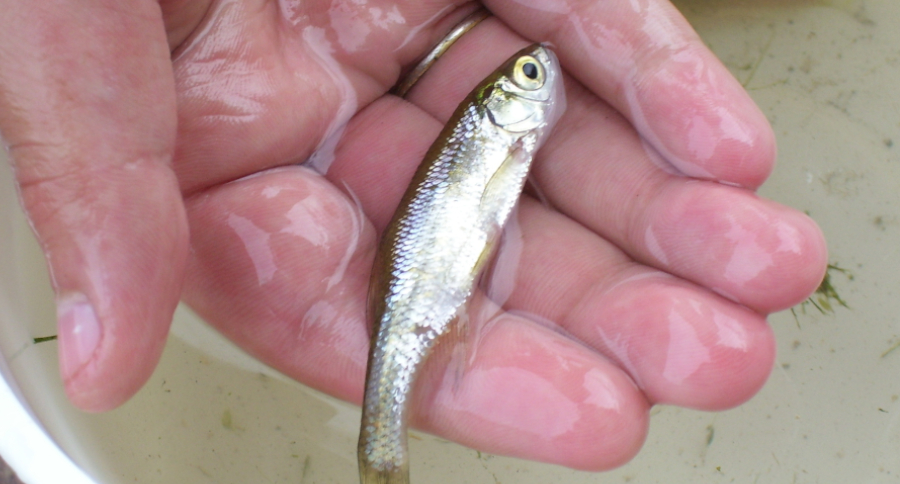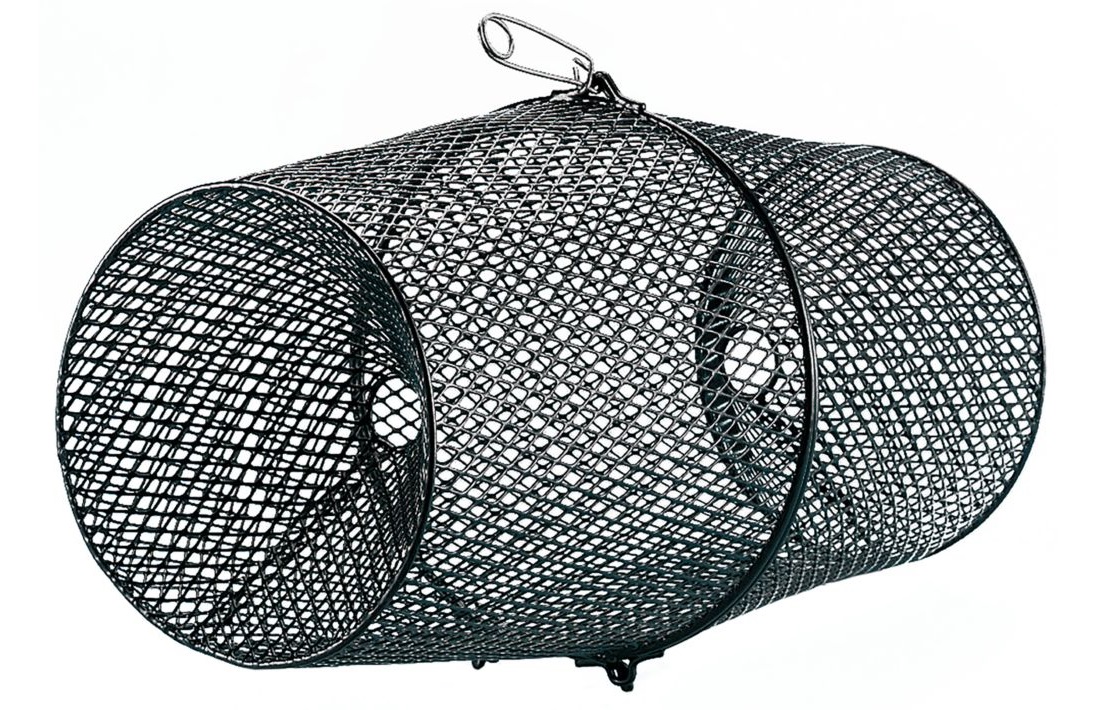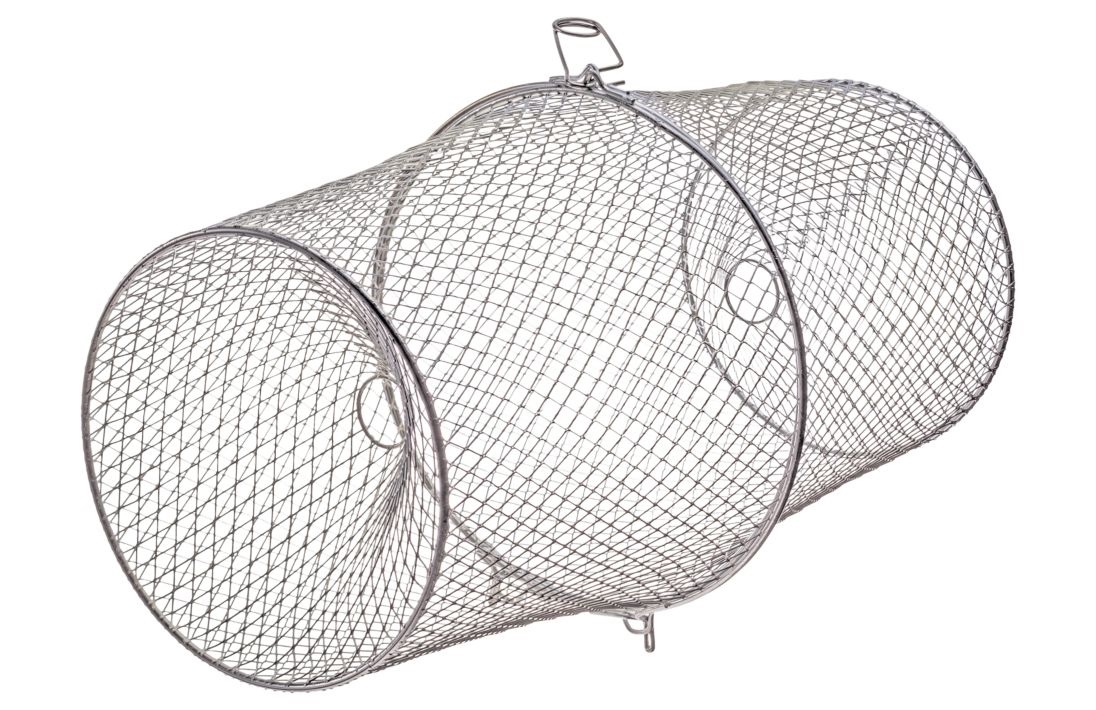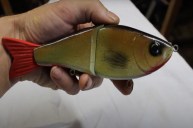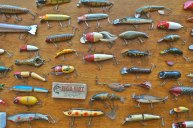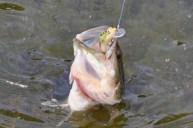Which is better, a commercial or homemade minnow trap?
Artificial lures may be the king of fishing tackle these days, but the most seasoned anglers know that there are times where the big fish will settle for nothing less than the real McCoy. That means live bait, or more specifically minnows as we'll be focusing on today.
Sure, there are bait shops where you can go and fill up your minnow bucket, but they can be rather expensive in some areas. In others supplies may be short at times. It also does not help if a store's fishing bait is not fresh. I am sure we have all been ripped off with lousy bait at one time or another.
The solution is to capture minnow bait yourself and cut out the middleman completely. Not only will your bait be fresher, it will also be free other than your time and labor. There are a few different ways to trap minnows. There are commercial traps and homemade ones. We will look at both today to try and determine which is best for catching bait.
Homemade minnow traps
Growing up here in Michigan, my family moved to a house with a pond when I was around 10 years old. I spent years after that figuring out ways to catch small fish and crawfish out of the pond. The easiest homemade fishing trap I made was to take a two-liter soda bottle and cut the top half off. Turn the neck of the bottle around and nestle it into the bottom half and it effectively creates a funnel that minnows swim into easily, but they cannot swim back out. You can see what I'm talking about in the video above.
I will never forget the first time I made one of these and submerged it into the calm waters of the creek that flowed into our pond. The next morning it was stuffed to the gills with crawfish that had made their way in after the bread I had used as bait. I was shocked at how well it worked. Depending on where I placed it in the pond, it would catch either the crawfish, minnows or a combination of both. It was much easier than using a fine fishing net and provided me with plenty of bait on the cheap.
Note that it does not have to be a soda bottle, it can be practically any plastic bottle or even a milk jug. I have seen variations where people just notch a small hole in a milk jug for minnows to swim inside and that is enough to capture dozens of bait fish overnight.
The big positive to making your own minnow or crawfish trap is that you are using recycled materials. It will cost you literally nothing to go the DIY route. The downside is that the trap is not going to be as durable and you will likely have to make new ones every season. Homemade traps made from plastic containers are also naturally buoyant, which means you have to weigh them down with rocks or weights while a commercially-made trap is going to be made of metal and will readily sink on its own.
Bass Pro Shops Minnow Trap
There are two traps that are sold under the Bass Pro Shops name. One is designed for crawfish and the other for minnows. The only difference you will find between the two is that the opening of the minnow trap is only one inch while the crawfish trap is 2.25 inches. While most trap manufacturers will have different sized openings based on what you are targeting, in my experience it does not matter that much unless the minnows you are catching are really small. You will probably catch both crawfish and minnows in the same trap depending on the location. This trap has a spring clip to close and attach a rope. Tie it to a branch, bait it with some cat or dog food or bread and set. You are good to go. For only $8.99, this is a solid option for a minnow trap. The steel mesh is dipped in vinyl to protect against sharp edges and to help the trap last longer.
Bass Pro Shops Galvanized Minnow Trap
This trap is identical to the first trap I shared. The main difference is that instead of a vinyl coating, it is made of galvanized steel to prevent rusting. It is slightly more expensive because it is probably going to be a little better at withstanding the elements. In my experience the galvanized stainless steel is a little easier to clean than the vinyl. Especially if you are trapping in a weedy area, but that is a minor complaint. If you are trapping in a weedy area, I would say go with galvanized. If you are trapping in a more open area, such as off a boat dock, go with the vinyl. Just know that both should catch more than their share of minnows and crawdads.
Promar Collapsible Minnow Trap
If you are already strapped for space with all your other outdoor gear, these traps are option to keep things neat and tidy. Promar makes small, medium and large sizes to accommodate a variety of uses. A bonus to this trap is that it is also designed to catch smelt and shrimp in saltwater, so it is a versatile device. Another nice bonus here are the zippered bait pockets. It is nice to not have your bread, cat food or whatever you are using fly everywhere when you open the trap to empty it. Trust me, bread is nasty after being submerged underwater overnight! This trap has good customer reviews and is heavy-duty enough to last several fishing seasons.
Which is better?
Honestly, I am torn on this. I have been trapping minnows and crayfish for more than 20 years and both homemade and commercial traps work well for different situations. For instance, if you are trapping in a river with a little bit of current, I have found commercial traps are going to hold up better and have less of a chance of becoming river trash than something you put together in your garage.
For small, placid ponds and slow-moving creeks, crafting something out of recycled materials feels a lot more rewarding and effective. During all the years I trapped the pond at my childhood home, I always seemed to have more luck with the homemade traps than the commercial ones. I am not sure why that is, make of it what you will. Either way, I feel like a minnow trap is an essential piece of fishing gear for anglers who take their bait seriously.
Trapping minnows and crayfish is great for adults and children alike to do to obtain bait on the cheap. Give it a try this summer, you are certain to have a lot of fun with it!
For more outdoor content from Travis Smola, be sure to follow him on Twitter and check out his Geocaching and Outdoors with Travis YouTube channels.
NEXT: LIVE BAIT FISHING: FROM THE CONVENTIONAL TO THE UNCONVENTIONAL
WATCH
https://rumble.com/embed/u7gve.cc4f1l/
